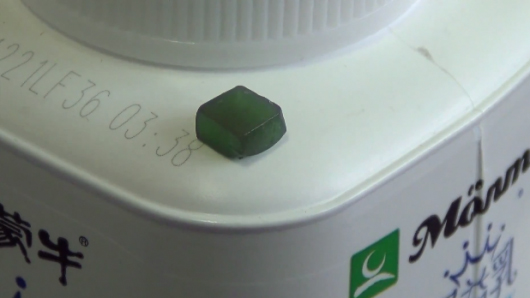
Some people are real sticklers for expiration dates on food, but others are risk-takers, keeping stuff around long past its “best by” date. What if you could see how fresh your food was without even opening the package? A research team from Peking University in Beijing presented just such a solution at a meeting of the American Chemical Society. The method is a tiny gel-like tag that affixes to the exterior of the food packaging and changes color to indicate the level of the food’s freshness.

The tag method is based on ambient temperatures and how they affect food spoilage rates. The “best by” dates on foods are largely determined based on the assumption that a user will store the product in optimal conditions. The small gel tags would take the storage conditions into account when determining the freshness of the food or supplement. A tags, each about the size of a single corn kernel, are programmed according to a specific food’s rate of spoilage and stuck to the exterior of the package. For their demonstration, the researchers used milk and the growth of E. coli bacteria. As the food deteriorates and becomes less safe to eat, regardless of the date stamped on the package, the tag changes color from red (meaning the food is at its freshest) to green (meaning the food is spoiled).
The color system sounds backward, but the tags start off red because the tabs contain gold nanorods, which are red. The other elements of the little tags include gelatin, vitamin C, lactic acid, and silver chloride. These agents react with the gold nanorods over time, causing the color changes. According to the research team, the tags are completely non-toxic and some are even edible. The freshness tags have already been patented in China; the team’s next goal is to contact food manufacturers and explain how the product would benefit their consumers.

